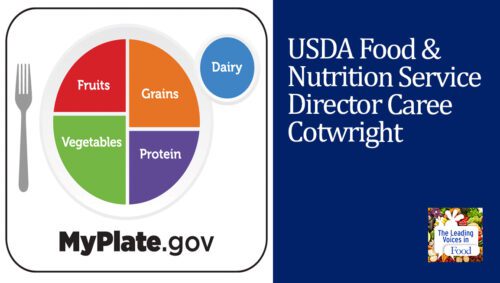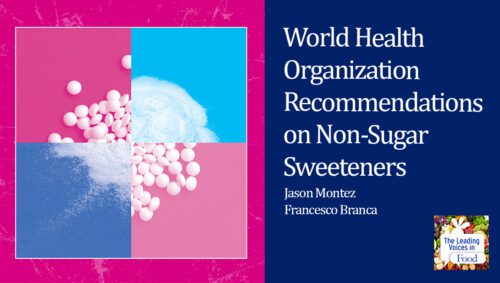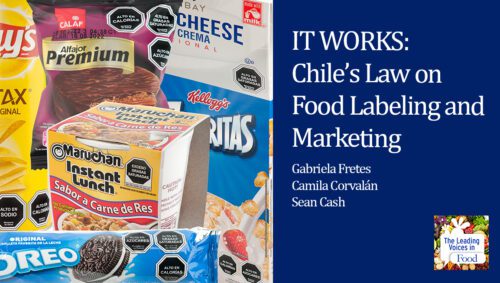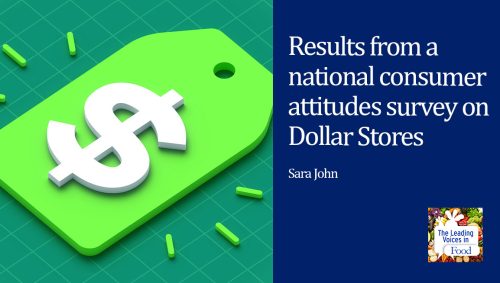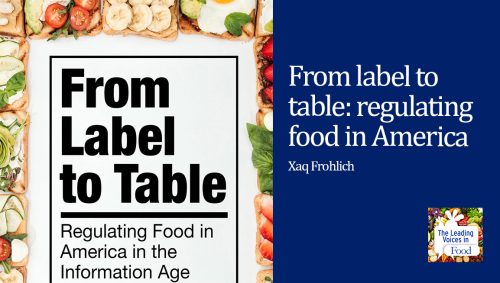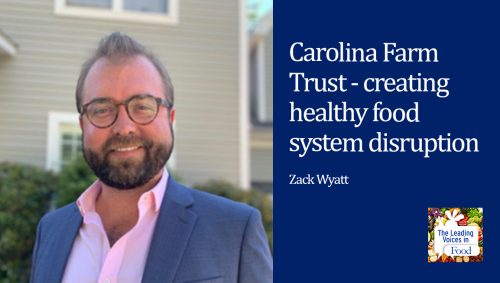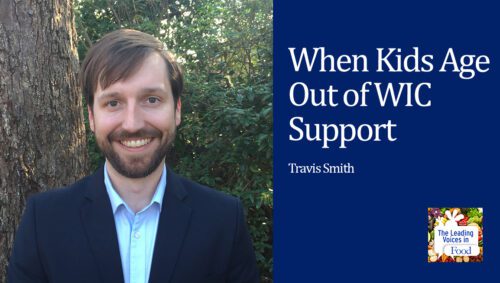The Leading Voices in Food
E78: How NC School Nutrition Programs are Grappling with Covid
On March 14th of this year when Governor Cooper issued his Executive Order and closed North Carolina public schools statewide, the first challenge was how do we continue to offer this essential service and feed our students? This podcast is part of a series focused on the impact of the COVID-19 pandemic on our food system. Today we’re looking at how North Carolina’s School Meal Programs have adapted during the pandemic and how some school children are continuing to get the nutrition that they need.
Subscribe: Apple Podcasts | TuneIN | Google Podcasts | SoundCloud | PocketCasts | Radio Public
Tags: Child Development & Nutrition | Childhood Obesity | Children Food Preferences | COVID-19 Pandemic Impacts on Food | Diet & Nutrition | Equity, Race & Food Justice | Food Policy | North Carolina | School Meals |

Elle Evans Peterson is the director of family engagement for the North Carolina Parent Teacher Association (NC PTA), the state’s oldest and largest volunteer organization, advocating for every child to reach their full potential. Founded in 1919 and affiliated with National PTA, there are more than 960 Parent Teacher Associations in schools across the state, with more than 110,000 members. Elle has been actively seeking policy, systems and environmental change for chronic disease prevention and public health initiatives since 2008. She completed her Master of Public Health degree (MPH) from Wright State University (Dayton, OH) and her BA in Economics and Mathematics from the University of North Carolina at Chapel Hill. She is also certified by NCHEC as a Certified Health Education Specialist (CHES).
Morgan Wittman Gramann is the executive director of the North Carolina Alliance for Health, an independent, nonpartisan, statewide coalition that convenes, mobilizes, supports, and empowers partners to advance equitable policies that reduce health disparities, prevent chronic disease, and promote health. Passionate about community health and policy change, Morgan has been an advocate for public health since 2006. She got her start in the tobacco use prevention movement. Since joining NCAH, Morgan has had the pleasure of expanding her health advocacy work to the areas of healthy food access and active living. Morgan earned her JD from the University of North Carolina at Chapel Hill School of Law and her BA in Anthropology from The American University in Washington, DC.
Interview Summary
It’s my pleasure to welcome public health advocates, Elle Evans Peterson, the Director of Family Engagement for the North Carolina Parent Teacher Association, and Morgan Wittman Gramann, the Executive Director of the North Carolina Alliance for Health. So Elle, let’s begin by asking you how North Carolina’s school districts have responded during the pandemic with respect to school meal programs.
[Elle] Thank you so much for this opportunity, Kelly. Just as a little bit of background, our state is unfortunately ranked eighth in the country in food and security for children under the age of 18. In fact, 900,000 students in North Carolina qualify for free and reduced priced meals, which is up from 800,000 just last year. So the need is definitely growing. And Feeding America estimates that nearly 30% of North Carolina children are now food insecure. Unfortunately, more North Carolina children than ever are relying on school nutrition programs for essential nutrition.On March 14th of this year when Governor Cooper issued his Executive Order and closed North Carolina public schools statewide, the first challenge was how do we continue to offer this essential service and feed our students? Immediately, the North Carolina Department of Public Construction, or DPI, which is our state’s education agency, began filing for USDA waivers. In all, North Carolina filed 21 federal waivers. And we were one of the first states in the nation to submit these applications.
Just in case anybody’s not sure what these waivers actually do, there are a lot of regulatory details about running a school nutrition program that feeds children. That’s for safety reasons, and to make sure that the meals have full nutrition. What the waivers do is they allow the individual school nutrition programs to have much more flexibility. So, it might be something as simple as, instead of serving the meal in the school cafeteria, we can serve it out on the sidewalk. We can do a grab and go and people can drive up and get their meals and take it with them. One of the requirements is that you have to have milk with each meal in order for it to be reimbursable. And so one of the waivers was, serve milk if you can, but if there’s one day where you don’t have milk, or you can’t keep it cool to follow public health guidelines, and it’s okay if you substitute it out for juice instead, things like that. The other thing that also happened at that same time is that school nutrition and transportation staff were deemed essential personnel. That was really important so that they could continue to feed our kids, and do their work. These federal waivers allowed things like not feeding them in the school cafeteria, but in some other options. This meant that some of our community partners like faith-based groups, and other non-profits could apply to help serve school meals across our state. These waivers allow the kind of flexibility in how the food is served and meal pattern guidelines, still following safety issues of course. But, they do permit options like grab and go, and curbside pickup, and delivery. In fact, Yellow School Buses have been out delivering meals in many districts. If you have seen a Yellow School Bus on the road this spring since March 14th, they were probably out delivering meals to our kids. In total, North Carolina school nutrition programs have served more than 18 million meals since March 16th. And that includes operating more than 1,000 pickup and drive through meal sites, and more than 2100 Yellow Buses out delivering those meals. That really is pretty incredible results.
It’s really heartening to know that the school bus drivers can play such an important role in this. And so in addition to the school buses, are there other things now that are working especially well?
[Elle] You know, Kelly, I appreciate you asking me that because there have been some amazing success stories that have come out of this. First of all, I will say that DPI was very efficient in submitting those waivers. Those requests went in as early as possible, and that set up the situation for great success. Then DPI and No Kid Hungry partnered very early on as well to set up a direct text line so that families had a tool with a mapping feature to help them find their closest feeding site. Many local school nutrition managers also changed their menus right away to grab and go, and creative packaging, and the curbside pickup, and that innovation, this is not something that school nutrition has ever been asked to do. To do this on the scale that they operate on a daily basis, five days a week, every week, on such short notice is really just an incredible feat. In fact, the meal delivery on school buses has never been done before. That innovation and pragmatism is what makes North Carolina School Nutrition Program staff so amazing. Meals were delivered at school bus stops, and other alternate locations. We offered weekend food kits, sometimes some locations offered like a full week of nutrition. And all of these creative options were first time innovations of the school nutrition programs across the state.Many, many community partners have stepped up. Regional food bank partners, our faith-based partners, the Meals on Wheels, the local community centers, and the local senior centers. The YMCAs, the Boys and Girls Clubs, and just many, many other non-profits across the state. In some locations, the North Carolina National Guard has even been helping serve meals. It has truly taken this entire group to make these meals available for our kids. The response has really been overwhelming.
I will give you a couple of examples of some interesting partnerships and innovations. The school nutrition out in Currituck County had to contend with all the other regular delivery issues, but Currituck County is out in the outer banks. She needed to create alternative packaging option for her meals, so that the food would stay steady during the deliver that included a ferry ride. In Durham County, in their school district, they created a new partnership named The Durham Feast, which was created specifically to address some unmet needs. Local restaurants there were enlisted to help feed the district students. In Yadkin County, we know that the school nutrition there partnered with 13 different faith-based organizations and they all helped to provide essential needs, including the packaging supplies. You don’t really think about it, but grab and go is not something that we normally offer a lot of in a regular school nutrition setting. Also, PPE was something that they helped provide. And additional perishable foods, including fresh fruit, apples and bananas that they were able to include in their meals. And then finally, in Halifax County, the school nutrition director there partnered with churches for supplies. Their local Meals on Wheels group helped deliver their meals in their, primarily rural, school district. They needed a little help to make sure that they covered the entire county, in addition to the district’s Yellow School Buses.
So the creativity and innovation that all of our school nutrition staff have exhibited is just amazing. But one thing was consistent, and Morgan and I heard this time and time again, no matter where the school was located, or what its size. When school nutrition team members talked to us about the impact of school closures and continuing to serve meals to our children, they have told us that they have been in absolute crisis mode since day one of school closures. They report that they’re working seven days a week. This is since early March. Most of their staff is too, to meet the needs, they’re so dedicated, and this is just remarkable, their endurance is incredible. We truly appreciate every single one of them. It’s nothing short of heroic, for sure. But obviously, this is just not a sustainable model.
It’s so heartening to hear stories of commitment and passion, and hard work. So thank you for sharing those. Morgan, let’s turn to you. What are we learning now about weaknesses in school meal programs? And are there issues that are front and center now with the backdrop of COVID?
[Morgan] So I first want to echo Elle, and just say that school nutrition program staff are really doing a phenomenal job making sure that our children are fed. Funding and flexibility have really been highlighted as weaknesses.School nutrition programs operate like small businesses, and they’re tasked with generating enough revenue to cover all of their expenses, from food, to equipment supplies, even employee salaries and benefits. They rely heavily on the sale of a la carte items, and paid meals to help balance their budgets. This is problematic under normal circumstances, but it’s especially problematic now because school nutrition programs aren’t able to sell food, so they’re not bringing in that revenue. Programs do receive limited federal funds in the form of reimbursements for free and reduced priced meals. The state does provide a 30 cent reimbursement to cover the copay for students who qualify for reduced price breakfast, as required by the USDA for the match. But, the state doesn’t provide any additional funding. So again, the school nutrition programs are having to bring in enough revenue to cover a lot of their expenses.
Going back to my discussion about employee salaries and benefits, the school nutrition program staff are state employees, but programs are expected to cover the costs of the salaries and benefits, despite the fact that these costs are controlled by the state. So for example, if the state legislature provides a state employee raise, school nutrition programs have to increase their sales enough to be able to cover this expense. And that can just be a really daunting task for them. Programs are also required to pay indirect costs. They pay a rate that’s significantly higher than what we see with other programs that receive federal funding. So not only are they having to raise their own revenue, and balance their own budgets, but they’re also having to pay out a lot of that money into the district. So they lost the final revenue from food sales, and then they’ve also accrued the additional costs related to adapting to COVID-19 as Elle talked about with delivering meals, and the grab and go items, and hazard pay and PPE, and all of those things.
We also know that in a typical school year, school nutrition programs accrue meal debt throughout the year when students aren’t able to pay for their meals. Typically, school nutrition programs would rely on the district, or sometimes a donor, to pay off that debt. But we know that budgets are tight all around, and that just isn’t as possible this year. A lot of the school year was a typical year. School nutrition programs do have that debt. And now, because of COVID-19, they’re left without support to be able to pay it off. In addition to having lost revenue and accrue additional costs.
So, I think COVID-19 has really just highlighted that this funding structure that school nutrition programs have is not sustainable. And then again, continuing with our themes, program flexibility, there are many restrictions on school nutrition programs, and how they serve and what they serve and to whom they serve. There is oversight needed. We are serving meals to children, we want to make sure that they’re nutritious, and safe, and healthy, and all of those things. But some of these requirements are significantly limiting access. Too often, it’s the students who need the meal the most that are being left out.
As Elle discussed, there are a number of waivers in effect currently that have been necessitated by COVID-19 that are making meals more accessible to students, for instance, the school nutrition programs are allowed to give many meals at once, rather than requiring the students to return to the meal site for each meal, and consume the meal on-site. They can serve meals on a more flexible schedule. They can make substitutions, she addressed the milk. They can adjust their nutrition guidelines if necessary. And then also, parents and guardians are able to pick up the meals for the child, rather than requiring the child to be there. This has increased the number of children who are receiving the meals, ensuring that they’re getting access to nutritious food. And highlighting that there really are barriers in normal circumstances, and the flexibility can really increase access.
So I’d especially like to hear from each of you on this question, what do you believe policy changes are needed to create a more resilient school meal system? Elle, let’s hear from you first, if you wouldn’t mind.
[Elle] Thank you for asking about that, Kelly. I think that is a really critical discussion that we need to have. And now is the time. And I’m going to let Morgan parse this answer in a little more detail, but simply put, school nutrition programs need state funding, and they need it now. With a loss of the a la carte sales, and the loss of retail revenues in school nutrition programs, an average of about 3.2 million dollars per week during the recent 12-week school closure, school nutrition programs need state funding to survive. And unfortunately, local districts have also suffered enormous revenue losses, and just can’t make up the difference. In a post-COVID-19 world, we have to realize that all costs have increased. And this adds another level of complexity. Supply chains have been impacted, so food prices are continuing to rise. Following the news, CDC serving guidelines, and providing PPE to staff, those things all have additional associated costs. So if there was ever a time for state funding for school nutrition programs in North Carolina, that time is now.And Morgan, your thoughts?
[Morgan] I agree with Elle. I think it all goes back to funding and flexibility. Additional funding is absolutely critical, and will continue to be critical moving forward. I think reducing the indirect costs that school nutrition programs are required to pay, will go a long way, and will allowing them to be able to continue to provide these services. And then going back to the waivers, I think a lot of the waivers that are currently in place should be permanent. I’m not suggesting that safety is not important, and nutrition is not important. But a lot of the waivers are providing increased access, and that is so critical. We know that the meal programs, specifically in the summer, which is the model that’s being used now, while kids are out of school, is very underutilized.We know that one of the biggest barriers to utilization is being able to get to the meal site. Without the waivers that are in place now, the student has to be in person at the site to consume each meal. In practice, this means that the students have to get to the meal site, sit there and eat breakfast within a specific timeframe, leave, and then return, eat lunch, again, within a specific timeframe. For so many students, that just isn’t possible. It’s difficult for them to get to the meal site once, much less twice a day. Having the flexibility to have a parent and guardian go pick up more than one meal at a time, in a larger timeframe is just really essential. We’ve seen that it’s increased access, and utilization of these programs. We know that that means more children are accessing the nutrition meals that they rely on.
And then, continuing some of the innovative partnerships and programs that have been developed, using yellow buses to continue meal deliveries, and working with restaurants, potentially. I think putting some funding into piloting those programs on a larger scale, and flushing out the details, and seeing how we can continue to support and involve school nutrition programs is really vital. Programs are feeding children this summer, and they’re going to continue to do so into the next school year and throughout the year, like they always have, no matter what school looks like. And they’re really providing a critical service, and we need to make sure that they have the funding, and the flexibility to do so in a way that’s going to serve the most children. And serve the most children who rely on school meals for their nutrition.
Well thank you both so much for pointing out a really important problem, food insecurity in children and their families in general. But especially during the time of a crisis, like the pandemic. And thank you also for sharing the inspiring work that you and others are doing to make such a difference in the lives of children. So again, thank you both so much for joining.





